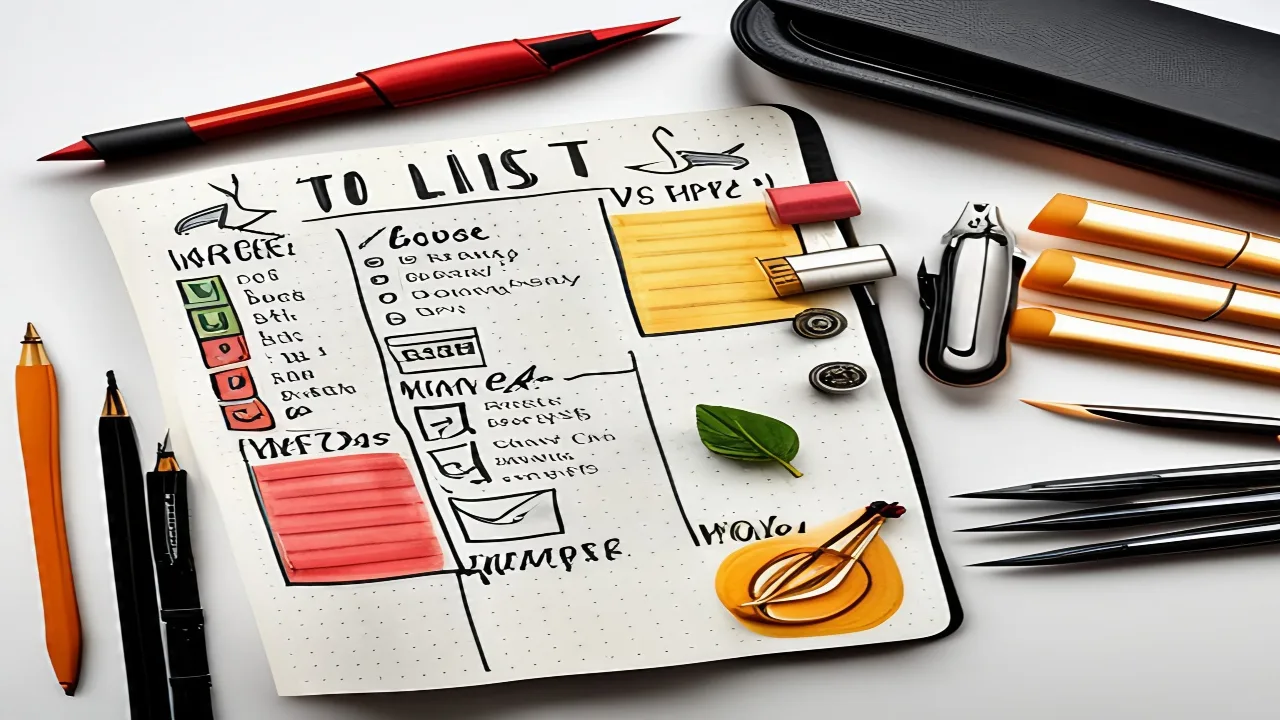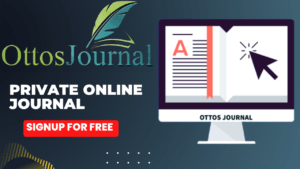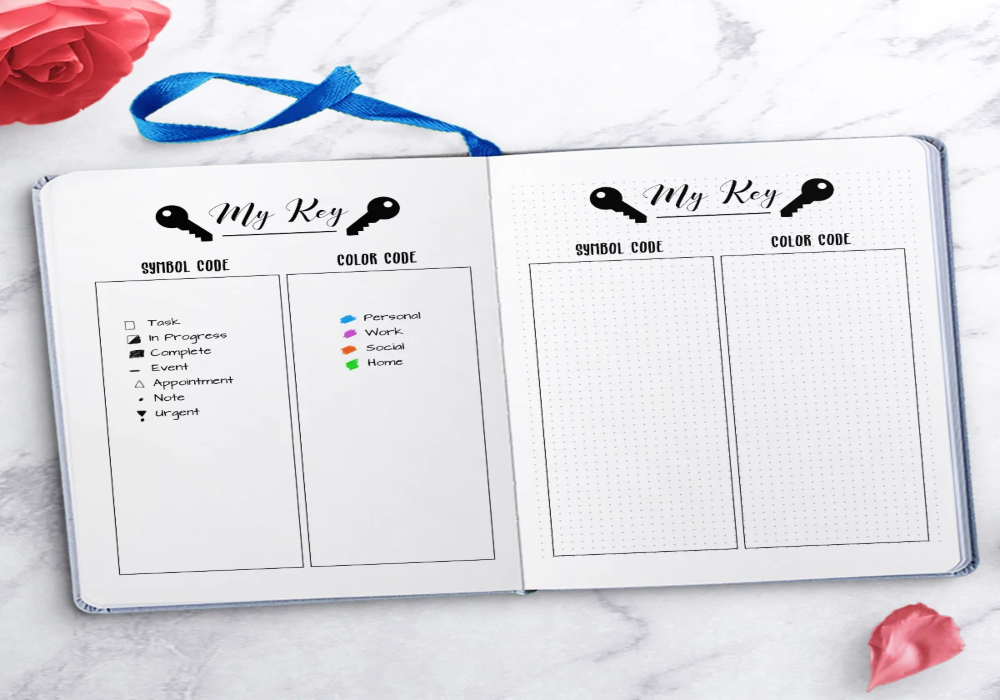Bullet journaling is an amazing system that has been around for decades but is only recently gaining more traction. With its growing popularity, new bullet journal ideas seem to be cropping up left and right – so what should you try out first as a beginner? This blog post will provide 25 beautiful bullet journal ideas for beginners that are perfect for those starting out on the fulfilling journey of this organizational tool. Whether it’s layout design, task lists, habit tracking spreads or something completely different – discover inspirational ways to kickstart (or revitalize) your bujo!
25 bullet journal ideas for beginners.
- Monthly Spread
- Saving Tacker
- Budget Tracker
- Travel planner
- Fitness Tracker
- Mood Tracker
- Habit Tracker
- Cooking Notes
- Garden Planning
- Daily Water Intake
- Home Improvement
- Weather Tracking Ideas
- Cleaning Schedules
- Wish List
- To-Do List
- Birthdays and Anniversaries
- Inspirational Quotes
- Sleep Log
- TV Show or Movie Tracker
- Pet Care Log
- Self-Care Routines
Monthly Spread:
To create a Monthly Spread in your bullet journal, begin with a clean two-page layout. Use the term “bullet journal layout” to organize your calendar, marking important dates like birthdays and anniversaries.
Incorporate this bullet journal spreads for habit trackers and a saving tracker to monitor expenses. Remember to maintain a professional tone to keep it organized and easy to read.

Saving Tracker:
For a saving tracker in your bullet journal, design a clear and concise bullet journal layout with space for each month.
Utilize this habit trackers to record daily or weekly savings progress, ensuring your bullet journal spreads are easy to follow.
This will help keep your finances organized and “track progress” towards your financial goals.
![]()
Budget Tracker:
In your bullet journal, create a dedicated bullet journal layout for a budget tracker. List your income, expenses, and savings goals using bullet journal key symbols for clarity.
Incorporate to-do lists to manage financial tasks and keep your bullet journal spreads simple yet informative for effective budget management.
![]()
Travel Planner:
Craft a practical travel planner in your bullet journal. Start with a “bullet journal layout” to outline your trip’s itinerary, including accommodations, transportation, and activities.
Use bullet journal spreads for packing lists and journal ideas for beginner travelers to jot down tips and must-see places, ensuring a stress-free journey.

Fitness Tracker:
To create a fitness tracker, design a bullet journal layout focused on your health and wellness goals. Incorporate habit trackers to monitor daily workouts, water intake, and nutrition.
Use bullet journal key symbols to represent different exercises and meals, keeping your bullet journal spreads motivating to keep your creative juices flowing.
![]()
Mood Tracker:
Craft a mood tracker in your bullet journal to monitor your emotional well-being. Create a bullet journal layout with a calendar grid for each day.
Assign colors from your bullet journal key to represent different moods and fill them in daily. This bullet journal method helps you reflect on your feelings and spot trends in your emotions.
![]()
Habit Tracker:
For a habit tracker, set up a clean bullet journal layout with a list of habits you want to cultivate. Use habit trackers to record your daily progress, checking off completed tasks or coloring in boxes.
This bullet journal spreads method is excellent for developing routines and achieving personal growth.
![]()
Cooking Notes:
Organize your cooking notes effectively in your bullet journal. Create a dedicated section with a bullet journal layout featuring recipe ideas, meal plans, and grocery lists. Use “bullet journal spreads” to record cooking times and ingredient measurements.
This bullet journal method simplifies meal preparation and encourages culinary exploration.

Garden Planning:
To plan your garden in a bullet journal, utilize a bullet journal layout that includes a sketch of your garden space and plant placement.
Implement this bullet journal spreads to schedule planting and harvesting dates. Include a bullet journal key for different plant varieties, making it easy to manage your garden and track progress.
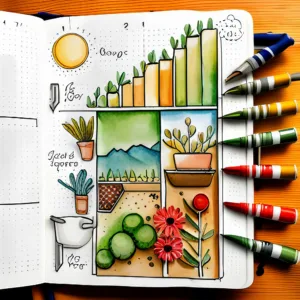
Daily Water Intake:
Monitor your daily water intake in your bullet journal with a straightforward bullet journal layout. Use habit trackers to mark off glasses or ounces consumed throughout the day.
Incorporate bullet journal key symbols to denote hydration goals and visualize your track progress towards staying well-hydrated.
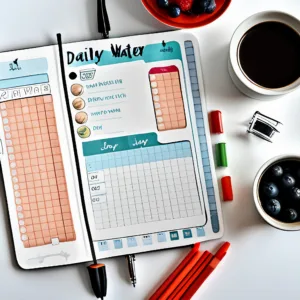
Home Improvement:
Keep track of home improvement projects in your bullet journal. Create a bullet journal layout that outlines tasks, budgets, and timelines.
Use this bullet journal spreads to document project updates and expenses. This organized approach ensures you stay on top of renovations and maintain a professional tone throughout the process.
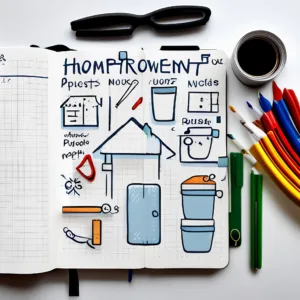
Weather Tracking Ideas:
Develop weather-tracking ideas in your bullet journal by designing a bullet journal layout for daily or monthly weather observations.
Incorporate this bullet journal spreads with icons representing different weather conditions and temperature ranges. This method helps you stay informed about local climate patterns.
![]()
Cleaning Schedules:
Manage your cleaning schedules effectively with a dedicated section in your bullet journal.
Use a bullet journal layout to create a cleaning calendar, assigning specific tasks to days or weeks. Implement bullet journal spreads for deep cleaning checklists and ensure your home stays organized with a professional tone.
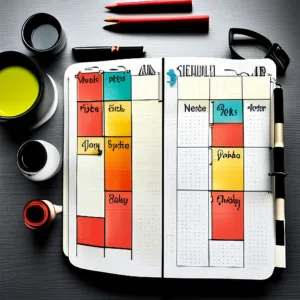
Wish List:
Keep your wish list organized in your bullet journal. Create a bullet journal layout with categories such as books, gadgets, or experiences.
Utilize bullet journal key symbols to prioritize items and mark those achieved. This method helps you track your desires and make thoughtful choices.
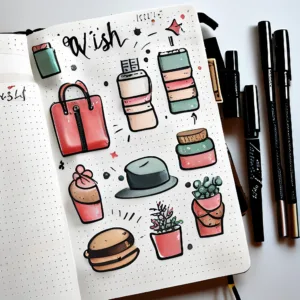
To-Do List:
Craft efficient to-do lists in your bullet journal. Use a simple bullet journal layout with checkboxes to jot down daily tasks and goals.
Prioritize using bullet journal key symbols, and employ bullet journal spreads for time blocking or project planning. This method enhances productivity and keeps you on top of your commitments.

Birthdays:
Remember important dates with a bullet journal dedicated to birthdays and anniversaries.
Create a bullet journal layout for each month, listing occasions and gift ideas. Incorporate this bullet journal spreads with space for card and gift shopping, maintaining a professional tone and thoughtful organization.

Inspirational Quotes:
Infuse your bullet journal with inspirational quotes. Include a bullet journal layout with a designated space for quotes that resonate with you.
Use this bullet journal spreads to illustrate these quotes creatively, encouraging motivation and personal growth.

Sleep Log:
Track your sleep patterns in a bullet journal to improve your rest. Design a bullet journal layout with daily slots to record bedtime, wake-up time, and sleep quality.
Incorporate habit trackers for tracking sleep duration consistently. This method helps you identify factors affecting your sleep and develop better habits.
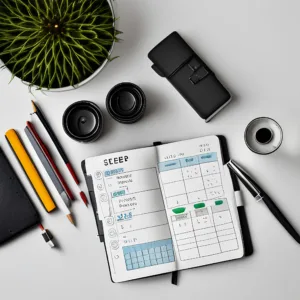
TV Show or Movie Tracker:
Organize your TV show or movie watching in your bullet journal. Create a bullet journal layout with lists of shows or movies you plan to watch.
Use this bullet journal spreads to rate and review them, keeping track of your entertainment preferences and maintaining a professional tone in your reviews.
Pet Care Log:
Manage your pet’s care with a dedicated bullet journal section. Create a bullet journal layout with space for feeding schedules, exercise routines, and vet appointments.
Utilize bullet journal spreads for tracking medications and milestones, ensuring your pet’s well-being while staying organized.
![]()
Self-Care Routines:
Prioritize self-care routines in your bullet journal. Design a bullet journal layout for daily or weekly self-care activities, including meditation, exercise, or skin care.
Use this bullet journal key symbols to mark completed tasks and maintain a professional tone to encourage consistent self-care practices.

What should a beginner bullet journal include?
As a beginner in bullet journaling, it’s essential to start simple and gradually build your journal. Begin with the basics: a future log, a monthly calendar, and a weekly spread. These serve as the backbone of your bullet journal. Include a bullet journal key to decipher your symbols.
Add habit trackers to monitor personal development and mood trackers to track progress and mood swings.
Lastly, sprinkle in creative juices by brainstorming ideas for journal spreads, gratitude entries, or favorite quotes. Keep it easy and relatable for a positive journaling experience.
How do you start a simple bullet journal?
Starting a simple bullet journal is easy. Begin with a blank notebook and a good pen, as these are the two most important items in bullet journaling. Create an index page to keep track of your entries.
Set up a future log to plan, followed by a monthly reflection to review your goals. Use a weekly spread for daily tasks and habit trackers to stay organized and track progress. Don’t forget to add some creative flair with washi tape, doodles, or color coding to make it visually appealing.
What should be in my bullet journal?
Your bullet journal should reflect your interests and goals. In addition to the basics like a future log, monthly calendar, and weekly spread, personalize it with content that matters to you. Include journal ideas, habit trackers for personal development, mood trackers, and brainstorming ideas to keep your creative juices flowing.
Add a gratitude journal to focus on positive things in your daily life and space for project planning. Incorporate your favorite recipes, songs, and quotes for a fun and engaging journaling experience.
What are the 2 most important items in bullet journaling?
The two most important items in bullet journaling are a blank notebook and a good pen. A blank notebook serves as the canvas for your creativity, while a good pen ensures your writing is smooth and legible.
These foundational tools are essential for setting up your bullet journal and helping you express yourself effectively.
Investing in quality materials sets the stage for a productive and enjoyable bullet journaling experience.
How do you layout a bullet journal?
Creating a well-organized bullet journal layout is key to staying on top of your tasks and goals. Begin with an index page to keep track of your entries.
Set up a future log to plan, followed by a monthly calendar and reflection page. Use a weekly spread for daily tasks, incorporating habit trackers to monitor personal development.
Add creative elements like doodles or washi tape to make your journal visually appealing and motivate you to stay organized.
What is junk journaling?
Junk journaling is a creative and eclectic journaling style that involves using a wide range of materials, such as old magazines, scraps, fabric, and ephemera, to create unique and visually appealing journal pages.
It’s a fun way to combine various elements to capture memories, thoughts, and experiences in a personalized and artistic way. Junk journaling is all about embracing imperfection and creativity in your journal.
Is bullet journaling good for ADHD?
Bullet journaling can be a powerful tool for individuals with ADHD. It helps with organization, time management, and task tracking.
The structured layout of bullet journals, including habit trackers and to-do lists, can aid in staying focused and reducing forgetfulness.
The creative aspect of journaling, like mood trackers and brainstorming ideas, can provide a positive outlet for creative energies.
What are the negative effects of bullet journaling?
While bullet journaling offers many benefits, it can have negative effects if not approached mindfully.
Perfectionism can lead to stress, as striving for amazing bullet journal pages becomes overwhelming.
Overcommitting to journaling tasks may lead to burnout and a sense of failure. It’s essential to strike a balance and adapt your bullet journal to suit your needs, focusing on personal development rather than perfection.
What does handwriting say about ADHD?
Handwriting can offer insights into ADHD, although it’s not a definitive diagnosis. Characteristics like inconsistency in letter size, spacing issues, and difficulty maintaining a straight line may indicate difficulties with focus and fine motor skills, which can be associated with ADHD.
However, handwriting analysis should be used in conjunction with other diagnostic criteria for a comprehensive assessment.
Why is writing so hard for ADHD?
Writing can be challenging for individuals with ADHD due to difficulties with focus and organization.
Maintaining attention to a writing task, staying on topic, and organizing thoughts can be a struggle. Fine motor skills and hand-eye coordination may affect handwriting quality.
Effective strategies, such as breaking tasks into smaller steps or using assistive tools, can help mitigate these challenges and make writing more manageable for those with ADHD.

